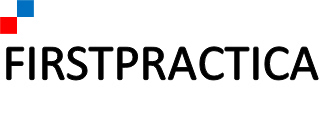What are referral programs and finders’ fees? Explore the pros and cons within a partner strategy, where they make sense and how they differ from reselling.
A referral is a source of contact, or lead, or potentially customers, coming from a third party. The third party informs the lead about your product or service, and this lead then contacts you. In some cases, the referral happens naturally without any incentive from one party to another, while in other times it occurs as a result of a program in place. This program can be managed by the referring party or the recipient of the lead.
On the surface, reselling and referring appear to be the same thing. However, they are significantly distinct practices from one another. In the case of reselling, the channel partner contracts with the end customer and distributes the product or service with a margin. The money changing hands goes from end customer, to channel partner (reseller), to vendor. This means that the reseller owns the customer relationship, and often times performs the first level of customer support on behalf of the vendor.
On the other hand, referral agreements are between vendor and referrer, but the vendor sells directly to the customer. The money changes hands between the vendor, which received the customer as a referred lead. Therefore, the vendor owns the customer relationship, and the contact with the customer. Sometimes, referrals happen naturally without the need for a referring agreement between vendor and referring entity. The referring entity mentions the vendor product or service because they believe it makes sense to the customer they are speaking with. Other times, there are referral fees in place which provide an additional incentive to the referring party, collecting commissions after the vendor signs its deal.
A referral program can make sense to a company, by creating a new source of revenue. There two ways the referral can go:
* For the receiving vendor: increased business from referrals. By offering rewards, often in the form of referral fees, to sourcing partners, the business can benefit from additional lead flow which may not have existed without such as program.
* For the referring party: a new revenue stream from referral fees, also called finder’s fees. This collection of commissions occurs after the vendor has sold its product to the lead, and the vendor pays the finder for the sourcing. The monies can go to marketing funds or other purposes, typically within the business group which produces leads.
The main potential downside to a referral agreement is the dilution of focus. For example, when a developer builds a business application for a customer, there may be financial incentives for the developer to direct the customer to a specific technology stack. In other words, the customer would inherit a stack which may not be the best for their needs, but instead, the one which yields the highest referral fees to the developer. For this reason, may system integrators express disinterest in earning referral fees, preferring to choose what’s best for the customer. It also allows them to generate 100% of their income from customers, and feel fully aligned with their interest.
Other potential disadvantages include an increased cost of goods sold for vendors, in the event that finders’ fees exceed the cost of qualified lead, relative to other lead sources. Both of these potential downsides can be mitigated or eliminated with the right partner program structure in place, as well as sales training.
Referral agreements can help significantly increase revenue, when they make sense and incentives align for the finder, the vendor and the customer. Nowadays some companies specialize in providing tools for creating and managing referral programs.

Leave a Reply